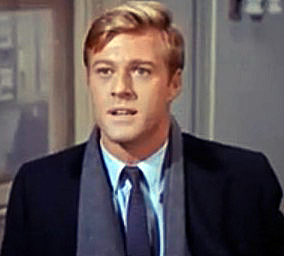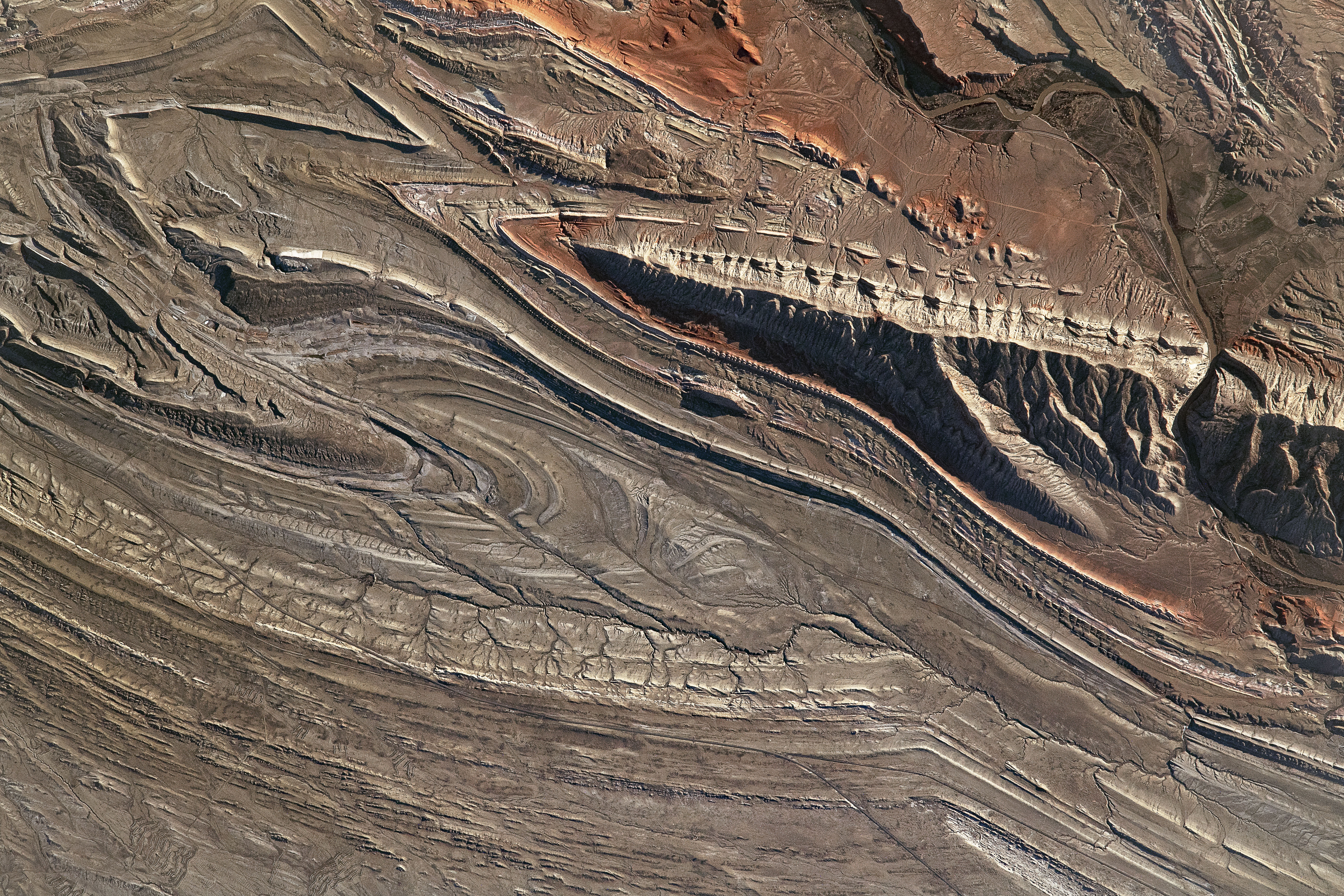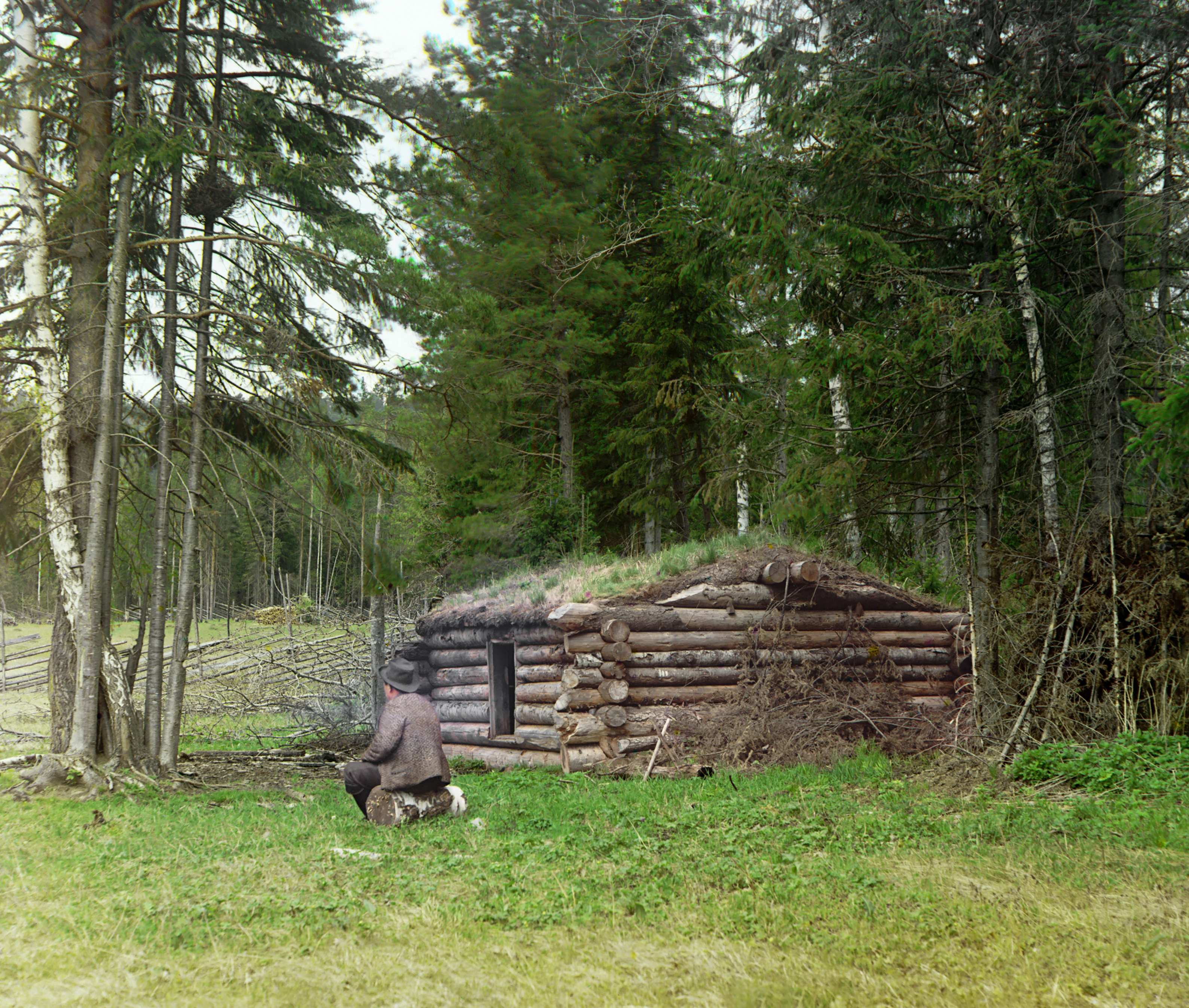|
Hole-in-the-Wall
Hole-in-the-Wall is a remote pass in the Big Horn Mountains of Johnson County, Wyoming. In the late 19th and the early 20th centuries, the Hole-in-the-Wall Gang and Butch Cassidy's Wild Bunch gang met at the log cabin, which is now preserved at the Old Trail Town museum in Cody, Wyoming. History Hole-in-the-Wall is located in the Big Horn Mountains of Johnson County in northern Wyoming. The site was used in the late 19th century by the Hole-in-the-Wall Gang, a group of cattle rustlers and other outlaws that included the Logan brothers, Black Jack Ketchum, and Butch Cassidy's Wild Bunch. Cassidy, the Sundance Kid, and other desperados met at a log cabin in the Hole-in-the-Wall country, which has been preserved at the Old Trail Town museum in Cody, Wyoming. The cabin was built in 1883 by Alexander Ghent. Pinkerton detective Charlie Siringo wrote "I started for the Big Horn Basin in the vicinity of the Hole-in-the-Wall in northern Wyoming. I had received instructions fr ... [...More Info...] [...Related Items...] OR: [Wikipedia] [Google] [Baidu] |
Pinkertons
Pinkerton is an American private investigation and security company established around 1850 in the United States by Scottish-born American cooper Allan Pinkerton and Chicago attorney Edward Rucker as the North-Western Police Agency, which later became Pinkerton & Co. and finally the Pinkerton National Detective Agency. At the height of its power from the 1870s to the 1890s, it was the largest private law enforcement organization in the world. It is currently a subsidiary of Swedish-based Securitas AB. Pinkerton became famous when he claimed to have foiled the Baltimore Plot to assassinate President-elect Abraham Lincoln in 1861. Lincoln later hired Pinkerton agents to conduct espionage against the Confederacy and act as Lincoln's personal security during the American Civil War. p. 43 As such, Pinkerton and his agency are sometimes seen as the forerunners of the United States Secret Service. Following the Civil War, the Pinkertons began conducting operations against organi ... [...More Info...] [...Related Items...] OR: [Wikipedia] [Google] [Baidu] |
Robbers Roost
The Robbers Roost was an outlaw hideout in southeastern Utah used mostly by Butch Cassidy and his Butch Cassidy's Wild Bunch, Wild Bunch gang in the closing years of the Old West. The hideout was considered ideal because of the rough terrain. It was easily defended, difficult to navigate into without detection, and excellent when the gang needed a month or longer to rest and lie low following a robbery. While hiding out at Robbers Roost, Elzy Lay and Butch Cassidy first formed the Wild Bunch gang. The Wild Bunch, early on led by Cassidy and his closest friend Elzy Lay, developed contacts inside Utah that gave them easy access to supplies of fresh horses and beef, most notably the ranch owned by outlaw sisters Ann Bassett, Ann and Josie Bassett. The gang constructed cabins inside Robbers Roost to help shield them from the harsh winters. There, they stored weapons, horses, chickens, and cattle. Pursuing lawmen of the day never discovered the site of the hideout. The outlaws hel ... [...More Info...] [...Related Items...] OR: [Wikipedia] [Google] [Baidu] |
Brown's Park
Brown's Park or Browns Park, originally called Brown's Hole, is an isolated mountain valley along the Green River in Moffat County, Colorado and Daggett County, Utah in the United States. The valley begins in far eastern Utah, approximately downstream from Flaming Gorge Dam, and follows the river downstream into Colorado, ending at the Gates of Lodore in Dinosaur National Monument. Known as a haven for outlaws such as Butch Cassidy and Tom Horn during the late 19th century and the early 20th century, it is now the location of the Browns Park National Wildlife Refuge. It was also the birthplace of Ann Bassett. She and her sister, Josie Bassett, were considered female outlaws and girlfriends to several of Cassidy's Wild Bunch gang. It is the location of John Jarvie Historic Ranch, where, in 1880, Scotsman John Jarvie built a ranch along the Green River. History According to Robert Redford, The earliest-known reference to Brown's Park was made in 1650 in the writings of Father ... [...More Info...] [...Related Items...] OR: [Wikipedia] [Google] [Baidu] |
Robert Redford
Charles Robert Redford Jr. (born August 18, 1936) is an American actor and filmmaker. He has received numerous accolades such as an Academy Award, a BAFTA Award, and two Golden Globe Awards, as well as the Cecil B. DeMille Award in 1994, the Screen Actors Guild Life Achievement Award in 1996, the Academy Honorary Award in 2002, the Kennedy Center Honors in 2005, the Presidential Medal of Freedom in 2016, and the Honorary César in 2019. He was named by ''Time'' as one of the 100 most influential people in the world in 2014. Appearing onstage in the late 1950s, Redford's television career began in 1960, with appearances on ''Alfred Hitchcock Presents'' in 1961 and '' The Twilight Zone'' in 1962. His greatest Broadway success was as the stuffy newlywed husband in Neil Simon's '' Barefoot in the Park'' (1963). Redford made his film debut in '' War Hunt'' (1962). He gained success as a leading man in films such as '' Barefoot in the Park'' (1967), ''Butch Cassidy and the Su ... [...More Info...] [...Related Items...] OR: [Wikipedia] [Google] [Baidu] |
Corral
A pen is a fenced/walled open-air enclosure for holding land animals in captivity, typically for livestock but may also be used for holding other domesticated animals such as pets that are unwanted inside buildings. The term describes types of enclosures that may confine one or many animals. Construction and terminology vary depending on the region of the world, purpose, animal species to be confined, local materials used and tradition. ''Pen'' or ''penning'' as a verb refers to the act of confining animals in an enclosure. Similar terms are kraal, boma, and corrals. Encyclopædia Britannica notes usage of the term "kraal" for elephant corrals in India, Sri Lanka, and Thailand. Australia and New Zealand In Australia and New Zealand a ''pen'' is a small enclosure for livestock (especially sheep or cattle), which is part of a larger construction, e.g. ''calf pen'', ''forcing pen'' (or yard) in sheep or cattle yards, or a ''sweating pen'' or ''catching pen'' in a shearing sh ... [...More Info...] [...Related Items...] OR: [Wikipedia] [Google] [Baidu] |
Livery Stable
A livery yard, livery stable or boarding stable, is a stable where horse owners pay a weekly or monthly fee to keep their horses. A livery or boarding yard is not usually a riding school and the horses are not normally for hire (unless on working livery - see below). Facilities at a livery yard normally include a loose box or stable and access for the horse to graze on grass. History of livery stables in North America Historically in North America, "livery stable" had a somewhat different meaning: a stable where horses, teams and wagons were for hire, but also where privately owned horses could be boarded for a short time. Because of the temporary boarding aspect, livery stables were often attached to a hotel or boarding house. Located at Buffalo, New York, the C. W. Miller Livery Stable is an example of a multi-story livery stable. The livery stable was a necessary institution of every American town, but its role has been generally overlooked by historians. In addition ... [...More Info...] [...Related Items...] OR: [Wikipedia] [Google] [Baidu] |
Bighorn Basin
The Bighorn Basin is a plateau region and intermontane basin, approximately 100 miles (160 km) wide, in north-central Wyoming in the United States. It is bounded by the Absaroka Range on the west, the Pryor Mountains on the north, the Bighorn Mountains on the east, and the Owl Creek Mountains and Bridger Mountains (Wyoming), Bridger Mountains on the south. It is drained to the north by tributaries of the Bighorn River, which enters the basin from the south, through a gap between the Owl Creek and Bridger Mountains, as the Wind River (Wyoming), Wind River, and becomes the Bighorn as it enters the basin. The region is semi-arid, receiving only 6–10 in (15–25 cm) of rain annually. The largest cities in the basin include the Wyoming towns of Cody, Wyoming, Cody, Thermopolis, Wyoming, Thermopolis, Worland, Wyoming, Worland, and Powell, Wyoming, Powell. Sugar beets, pinto beans, sunflowers, barley, oats, corn and alfalfa hay are grown on irrigated farms in the region. H ... [...More Info...] [...Related Items...] OR: [Wikipedia] [Google] [Baidu] |
Charlie Siringo
Charles Angelo Siringo (February 7, 1855 – October 18, 1928) was an American lawman, detective, bounty hunter, and agent for the Pinkerton National Detective Agency during the late 19th and early 20th centuries. Early life Siringo was born on Matagorda Peninsula in Matagorda County, Texas, to an Irish immigrant mother and an Italian immigrant father from Genoa. His father died when Siringo was a year old. He attended public school until the start of the American Civil War, then took his first cowpuncher lessons in 1867 before moving to St. Louis after his mother remarried. Siringo attended Fisk public school for a time while in New Orleans but then started work as a cowboy for Abel Head "Shanghai" Pierce in April 1871, after returning to Texas. In July 1877, Siringo was in Dodge City, Kansas, where he survived an encounter with Bat Masterson. Siringo was already working as a cattle drive cowboy when he started working for the LX Ranch in 1877. This job entailed chas ... [...More Info...] [...Related Items...] OR: [Wikipedia] [Google] [Baidu] |
Log Cabin
A log cabin is a small log house, especially a minimally finished or less architecturally sophisticated structure. Log cabins have an ancient history in Europe, and in America are often associated with first-generation home building by settlers. History Europe Construction with logs was described by Roman architect Vitruvius Pollio in his architectural treatise ''De Architectura''. He noted that in Pontus in present-day northeastern Turkey, dwellings were constructed by laying logs horizontally overtop of each other and filling in the gaps with "chips and mud". Log cabin construction has its roots in Scandinavia and Eastern Europe. Although their precise origin is uncertain, the first log structures were probably being built in Northern Europe by the Bronze Age around 3500 BC. C. A. Weslager describes Europeans as having: A medieval log cabin was considered movable property, evidenced by the relocation of Espåby in 1557, where the buildings were disassembled, transpo ... [...More Info...] [...Related Items...] OR: [Wikipedia] [Google] [Baidu] |
Johnson County, Wyoming
Johnson County is a county in the north central part of the U.S. state of Wyoming. At the 2020 United States census, the population was 8,447. The county seat is Buffalo. Kaycee is the only other incorporated town in the county. Johnson County lies to the southeast of the Bighorn Mountains along Interstate 25 and Interstate 90. The Powder River flows northward through eastern Johnson County. History Johnson County was created on December 8, 1875, as Pease County from parts of Albany, Carbon and Sweetwater Counties. It was organized in 1881. The county was initially named for Dr. E. L. Pease of Uinta County. But, in 1879, the county was renamed Johnson, for E. P. Johnson, a Cheyenne attorney. In 1888, Sheridan County was created from a portion of Johnson County. In 1890, Big Horn County was created from Johnson County along with land from Fremont County and Sheridan County. From 1889 to 1893, Johnson County was the scene of the Johnson County War, where wealthy ... [...More Info...] [...Related Items...] OR: [Wikipedia] [Google] [Baidu] |
Outlaw
An outlaw, in its original and legal meaning, is a person declared as outside the protection of the law. In pre-modern societies, all legal protection was withdrawn from the criminal, so anyone was legally empowered to persecute or kill them. Outlawry was thus one of the harshest penalties in the legal system. In Germanic law, early Germanic law, the death penalty is conspicuously absent, and outlawing is the most extreme punishment, presumably amounting to a death sentence in practice. The concept is known from Roman law, as the status of ''homo sacer'', and persisted throughout the Middle Ages. A secondary meaning of outlaw is a person systematically avoiding capture by evasion and violence. These meanings are related and overlapping but not necessarily identical. A fugitive who is declared outside protection of law in one jurisdiction but who receives asylum and lives openly and obedient to local laws in another jurisdiction is an outlaw in the first meaning but not the seco ... [...More Info...] [...Related Items...] OR: [Wikipedia] [Google] [Baidu] |









